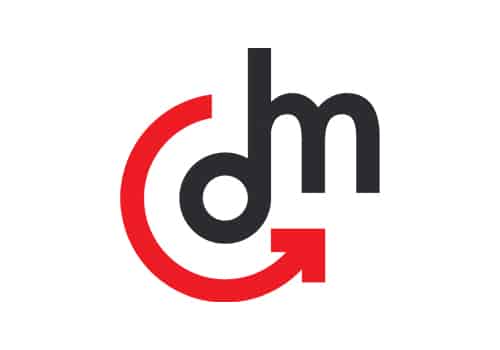7 trends university researchers think business leaders should know

Emily Barske Wood May 5, 2023 | 6:00 am
14 min read time
3,399 wordsBusiness Record Insider, Education, HR and LeadershipWe asked a few business professors at the state universities to tell us about a trend in research that business leaders should know about. Here’s what they had to say.
– Emily Barske, Business Record editor
Digital human technology is disrupting how companies engage with customers.
Researchers at the Ivy College of Business at Iowa State University are studying how company interactions with customers are affected by one established technology (social media) and one very new technology (digital humans).
This research has implications for business leaders.
Social media adds a deeper complexity to how businesses communicate and learn from their customers. Research shows that the use of social media, in addition to face-to-face relationships, positively contributes to brand performance, retailer performance and consumer-retailer loyalty.
Raj Agnihotri, a professor of marketing at the Ivy College of Business, has been investigating social media as an emerging digital supply chain management tool. He found that account managers can use social media to increase their product and competitor knowledge.
Sales managers should know that social media technology enables businesses to consistently push curated information to segmented customers. Customers can get their desired constant communication while the salespeople are freed up to continue prospecting for new clients. But research also warns that customer responsiveness is needed to reap the benefits of social media. Otherwise, social media use can hurt customer satisfaction with the brand.
Digital human technology is the next step after voice-controlled assistants (like Siri) and text-based artificial intelligence agents (chatbots) that have become commonplace. Digital humans are highly realistic representations of humans that can be controlled either by a human (a puppet avatar) or by artificial intelligence (an AI agent).
Research on digital human technology focuses on understanding whether people treat digital humans differently than they would treat human beings, seeking the answer to whether or to what extent digital humans can be used to replace human workers. The most current research measures the conscious and subconscious responses and preferences triggered by digital humans.
Ivy Yuan, an assistant professor in information systems and business analytics, focuses on how people interact with digital humans differently than chatbots, even if the underlying intelligence of both technologies is the same. She finds that people have a greater affinity for digital humans in many contexts, including customer service agents, travel agents and public service announcements.
Business leaders should know that digital human technology is disrupting how companies engage with customers. The trend of deploying highly realistic-looking digital humans controlled by AI for simple customer service tasks commonly performed by chatbots is inevitable. A better understanding of how people respond to digital humans is the first step toward using this technology to create a competitive advantage.
– Submitted by the Ivy College of Business at Iowa State University
Disasters have killed just-in-time supply chains.
Empty shelves have become a common sight in American stores. Toilet paper, cough syrup, baby formula and eggs are just a few of the products that have been in short supply since the COVID-19 pandemic started a series of global supply chain disruptions three years ago.
Those shocks exposed weaknesses and vulnerabilities in a supply chain dependent on just-in-time delivery and warehouse strategies that left it in such brittle condition, just one disaster was enough to break it. Under multiple subsequent shocks — a war in Ukraine, inflation, avian flu, a ship stuck in the Suez Canal, to name a few — it had little chance.
Just-in-time was a boon for manufacturers and retailers when the conditions were right. So efficient, it left little waste and maximized profits. No wonder it was a near-universal strategy.
But we have to acknowledge now that the conditions that made just-in-time strategies so efficient and profitable are not coming back. In response, it’s imperative we develop a new, more agile approach to replace it, one that starts with an assumption that everything involved in the supply chain can change at a second’s notice. We need a strategy that anticipates that change and quickly pivots with the circumstances so that inventories are available when needed and never stockpiled when they are not.
We need to develop a risk-adjusted, agile inventory management system.
In the optimal just-in-time world, manufacturers received materials and retailers received their products just when they were needed. When consumers needed more shirts, for instance, the cloth and other raw materials arrived at the factory just in time to make them, and the completed shirts arrived on store shelves just in time to be sold. Money wasn’t wasted with bolts of cloth and unsold shirts taking up costly space in warehouses and retail storerooms.
Just-in-time became even more efficient as advances in technology and data collection gave manufacturers and retailers the consumer insight needed to know what shoppers wanted and when.
But as we’ve seen in the last three years, a wide range of risk factors — from pandemics to geopolitical issues to hurricanes to the influence of a random social media post — can undermine even the most efficient just-in-time strategy.
Some companies seeing those weaknesses have adopted a Plan B just-in-case strategy, stockpiling products and materials as a hedge against future shortages. But storage costs cause a bullwhip effect that drives up prices throughout the supply chain and forces businesses to dump excess inventory at steep discounts.
So it’s clear we need something that is more agile and adjusts for risk on the fly. But what does that kind of supply chain look like? Businesses need to consider a number of factors, and they can start with the same emphasis on data analytics and technology that made just-in-time so profitable. Managers need to not just understand but even be able to predict events that could threaten supply chains, and advances in artificial intelligence can help them monitor and anticipate risks they can develop contingencies.
Technology can also help firms remain flexible in how much safety stock to keep on hand, adjusting stock and inventory locations based on risk factors in the supply chain at any given time.
Finally, companies need to consider the political reliability of where their suppliers are based. Five years ago, it made sense to choose a China-based supplier because of low costs, but ongoing geopolitical conflicts and COVID-19 management have made the country much riskier, with lengthy order delays not unusual. Is China the most reliable source country anymore, and if not, what should replace it? Measuring cost versus predictability and cost versus reliability can drive those discussions.
The need for more flexible inventory management began even before COVID-19 because technological advances were already disrupting supply chains. But today’s global realities have made flexibility even more imperative if we hope to keep supply chains running and shelves stocked.
– Jennifer Blackhurst, professor of business analytics, University of Iowa Tippie College of Business
Don’t be afraid of ChatGPT.
ChatGPT has arrived, bringing artificial intelligence directly into the workplace, classroom and other parts of our lives to create what is essentially a fourth industrial revolution.
But is it something to worry about? While artificial intelligence will only play a greater role in our futures, it is not something to fear. It is a tool, and like all tools, it’s imperative we learn to understand how it works and the best ways to use it.
Like calculators and CD players before them, AI-enabled tools can make our lives more productive, fun and entertaining. They can write poems and informative essays, summarize texts and answer questions. They can be used to help organize thoughts and take notes. Imagine a ChatGPT-enabled companion robot that can read stories and write jokes for elderly or lonely people.
They will have a significant impact on the workplace, too, making employees more productive and creative. Companies like Microsoft and Google are already incorporating ChatGPT tools into their office products to help people work more efficiently.
Like any new tool, AI presents a set of ethical, legal and economic challenges that must be addressed. Students can use these tools to cheat on homework or tests. It raises intellectual property questions and the work it produces often contains factual inaccuracies. These tools are also unable to make ethical decisions.
But even with these challenges, we need to embrace and leverage these tools to help us be more productive, finding new business usage processes and applications to benefit society. In schools, for instance, there are already calls to ban student use of ChatGPT in tests and writing assignments. Instead, we should be teaching students how to use them as learning tools. Businesses are already using ChatGPT, so schools are doing a disservice to their students by prohibiting it.
We can take steps to develop regulations, awareness and training. We’ll need to build detection tools to flag cheating, and laws will need to be adjusted to prevent people from stealing others’ intellectual property. Liability will be an issue, too. For instance, who is legally responsible when something written by a ChatGPT command causes someone to be injured?
Individually, we need to use our intelligence and perform our own due diligence to fact-check and gatekeep when we use ChatGPT. Always take what it produces with a grain of salt. And don’t be afraid to educate ourselves on how to better leverage these tools to create new applications, usages and job opportunities. The future is wide open with these AI tools. Whoever sees ChatGPT as a friend and not an enemy can grasp the opportunity to build next-generation creative applications and have the advantage.
– Patrick Fan, professor of business analytics, University of Iowa Tippie College of Business
New risk management and insurance major at Iowa will be ‘research active.’
The University of Iowa’s Tippie College of Business starts a new risk management and insurance major this fall, with a curriculum informed with the latest research in the field. For students, learning about new research findings ensures graduates are prepared in the most current topics and methodologies. Can alternative explanations be ruled out? Are the assumptions underlying the models realistic? Would the results differ if we changed the modeling assumptions or empirical tests? Understanding the process and learning to apply it to new questions and business problems is what provides the foundation for lifelong learning and successful careers.
The risk management and insurance program ensures that classes are taught by research active faculty. Students are exposed to both cutting-edge research results and the thought process of their instructors for finding answers to complex questions.
Some results might seem counterintuitive at first, but make sense once the mechanism gets revealed. An example is my Tippie colleague Cameron Ellis’ finding that medical cannabis legalization in a state leads to a reduction in car accidents and lower average auto insurance premiums. Most of us would expect the opposite effect. Further analysis reveals that the results are strongest in geographic areas that experienced more drunken driving incidents prior to legalization. This variation reveals a substitution effect ― if people consume medical cannabis they might drink less alcohol, reducing the number of alcohol-related accidents. Once we understand this mechanism, we see that legalization of medical cannabis reduces auto insurance premiums.
Another example is my study with colleague Meghan Esson that finds no evidence that property-liability insurance companies’ capitalization levels constrained their premium growth during the two most recent recessions and limited their ability to meet demand, showing a resilience that contrasts with the experience of banks.
Additionally, my colleague Richard Peter shows in a recent article that reducing uncertainty about the effectiveness of a vaccine will always increase vaccination rates, but reducing uncertainty about the probability of a severe path of a disease (e.g., catching long COVID) might have the opposite effect and reduce vaccination rates.
– Thomas R. Berry-Stoelzle, nationwide faculty fellow and associate professor, University of Iowa Tippie College of Business
Examples of hedge fund activism demonstrate the importance of timely disclosure.
Disclosure is often the last thing business professionals want to do. However, these activities are necessary. Business disclosures hold material information on a stand-alone basis or when combined with a broader mosaic of the information held by practitioners. Timely disclosure is key. When there is a delay in disclosure, the opportunity arises for individuals to act on material information before the general public.
Hedge fund activism is a good example. Though hedge fund activist tactics of publicly shaming corporate managers are entertaining and attention-grabbing, current activism and stock ownership regulations allow activists to use other opaque tactics to drum up shareholder support. In particular, the Securities and Exchange Commission mandates that any individual who acquires beneficial ownership of more than 5% in a firm, a threshold traditionally met by hedge fund activists, has 10 days to file a Schedule 13D or 13G with the SEC. Given the litigation threat posed by the targeted firm and the SEC, these guidelines are regularly followed. However, the current regulation provides no clarity on what can occur during the 10 full days, let alone explain why exactly 10 days are so critical.
The value of knowing when a hedge fund activist will file their 13D is material. Studies have shown the abnormal stock returns of firms for which a hedge fund activist files a 13D range anywhere from 5% to 7% in the days surrounding the public filing date of the 13D. In recent joint work by my team and me, forthcoming in the Journal of Financial and Quantitative Analysis, we found evidence suggesting hedge fund activists capitalize on the material nature of their ensuing 13D filings to garner support from fellow shareholders for their activist campaign.
Specifically, our team uses internet proxy data of institutional investors to identify “suspicious” access of target firm financial statements immediately before the public announcement of a hedge fund activists’ 13D filings. Although relatively infrequent, the connections identified between various institutional investors and specific hedge fund activists suggest a pattern of shared information in the days leading up to the activist’s 13D filing. Furthermore, the authors find that hedge fund activist campaigns associated with suspicious connections perform better and have greater support from shareholders during the campaign. That is, activists of these campaigns are more likely to win their proxy contest, ultimately getting their candidates elected to the board of directors. Such evidence is exactly consistent with activists sharing the ensuing 13D plans with a select group of institutional investors, trading the 13D announcement return for voting support later on in the campaign.
The 10-day window of 13D disclosure has drawn the attention of senators and SEC regulators. In 2016, Wisconsin Sen. Tammy Baldwin proposed the Brokaw Act, a piece of legislation brought about by hedge fund activist Starboard Value’s campaign against the Wausau Paper Co. This campaign was associated with the closing of a Wausau paper mill that happened to be the primary employer in the town of Brokaw, Wis., and whose closure decimated the local economy. The bill proposed changes to 13D requirements, including giving the Securities and Exchange Commission more authority in determining whether investors collaborated as a group and shortening the days an activist has to file their form 13D (i.e., less than 10 days). The act has thus far remained unpassed and has struggled to gain traction, partially due to the absence of empirical evidence of collaborative efforts between investors.
The study by our team helps move this bill along as it is the first study to present evidence suggesting that hedge fund activists may benefit from the presence of other investors who are informed of their actions. Additionally, the SEC recently proposed revisions to 13D legislation that would explicitly regulate informed trading during the pre-13D period. The proposal borrows from the rules laid out in the Brokaw Act. These kinds of legislation will likely be passed in some form since many aspects have bipartisan support. The bottom line is timely and quality disclosure in business is essential.
– Ryan Flugum, assistant professor of finance, University of Northern Iowa
Capturing retail investors’ attention is important.
Retail investors have widespread and significant ownership in the U.S. stock market. They used to be seen as “passive investors,” but times have changed. Retail investors have become increasingly more important in the “Google Age” where Google and social media play a critical role in many aspects of society. Retail investors have unique information and insights into companies’ business, they help disseminate important information on companies, and they impact the valuation of companies in multiple ways.
Recent business research shows that when retail investors pay attention to a company, the demand for the company’s stocks will likely increase, bidding up the stock price and leading to higher valuation of the company. This will particularly benefit younger companies planning on going public. Meanwhile, these retail investors will actively collect information on the company through multiple channels (such as stock forums, the SEC’s filing database and feedback from the company’s customers) and share such information with each other through social media platforms such as Facebook, Twitter and online forums. This would be great for the company’s valuation if the collected information is positive. Otherwise, it will amplify the negative impact of the collected information on valuation. For instance, recent studies show that high levels of retail investors’ attention help with the collection of evidence for fraudulent corporate activities or rapid discovery of such activities. Given the impact of retail investors on company valuation, high levels of retail investor attention will translate into more significant losses on stocks of those companies.
Lots of companies are aware of the active role of retail investors and their influence on stock prices. Therefore, they employ tools such as advertising, social media and investor relations programs to attract the attention of retail investors and boost company valuation. Let’s not forget that retail investors are also consumers, so they will likely affect companies’ sales and revenues as well. However, companies want to be careful with the messages sent out to retail investors because research shows that retail investors will respond to the tone and readability of the messages.
– Ronnie Chen, assistant professor of finance, University of Northern Iowa
Employers facing difficulties filling employment positions will affect the economy.
Many employers face a demographic challenge. There are far more job openings than job seekers such as unemployed individuals and new entrants into the labor force. For February 2023, the Bureau of Labor Statistics reported that the United States had over 9.9 million job openings and 5.9 million unemployed individuals. In Iowa, the BLS reported 102,000 job openings and 50,100 unemployed individuals. Our March 2023 unemployment rate was 2.8% as compared with 3.5% for the U.S.
Iowa has traditionally had one of the highest labor force participation rates in the country. As the population ages, however, the labor force participation rate likely will decline. Since 2008, both Iowa and the United States have seen steady declines in labor force participation. As the population ages, a disproportionate share of the labor force retires. This will get worse, especially in Iowa, where one-quarter of Iowa’s workforce is age 55 or older.
Another problem is a mismatch between the skills employers want and the skills potential employees have. To help solve this problem, in 2018 our state launched “an aggressive workforce policy initiative” called the Future Ready Iowa Act. Among other incentives, the program offers college scholarships for programs that align with high-demand jobs such as nursing and engineering. This will not be a quick fix because building a workforce of people whose skills match with employer needs takes time.
What will be the economic impact, if any, of this trend?
Our material standard of living depends on how much we produce. If the labor force participation rate is shrinking, then production depends on relatively fewer people. Other things being equal, that will adversely affect our standard of living. The same is true if people cannot find jobs because they do not have the requisite skills.
In addition, with relatively fewer people working, payments into the Social Security system are relatively smaller. The system is already under financial stress, so the problems in the labor market will make it worse.
– Drew Conrad, director of IDM (Institute for Decision-Making) at the University of Northern Iowa and representative of the Board of Regents on the Iowa Workforce Development Board, and Lisa Jepsen, professor of economics and an administrative fellow for the Center for Excellence in Teaching and Learning at the University of Northern Iowa.

Emily Barske Wood
Emily Wood is special projects editor at Business Record. She covers nonprofits and philanthropy, HR and leadership, and diversity, equity and inclusion.










